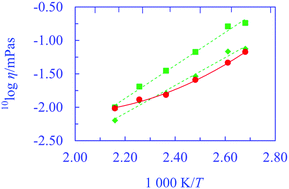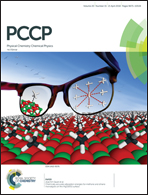Rheology of phosphonium ionic liquids: a molecular dynamics and experimental study
Abstract
We have studied the rheological behavior of the ionic liquid trihexyl(tetradecyl)phosphonium bis(mandelato)borate, [P66614][BMB], and compared it with that of another ionic liquid, namely trihexyl(tetradecyl)phosphonium chloride, [P66614][Cl]. The non-halogenated [P66614][BMB] has been selected as it is known to provide enhanced lubrication performance and is, consequently, of technological importance. The ionic liquid [P66614][Cl], despite its relatively simple anion, exhibits viscosities very similar to those of [P66614][BMB], making it an excellent reference fluid for the modeling study. The viscosities of the ionic liquids have been obtained by equilibrium atomistic simulations using the Green–Kubo relation, and by performing nonequilibrium shear flow simulations. The influence of the simulation system size and a reduction of the atomic charges on the viscosities of the ionic liquids are systematically studied. The atomic charges are reduced to mimic the temperature dependent charge transfer and polarization effects. It has been found that scaling the point charges with factors between 0.60 and 0.80 from full ion charges can provide reliable viscosities of [P66614][BMB], consistent with the experimentally measured viscosities within the studied temperature interval from 373 to 463 K. The viscosities of [P66614][Cl] have been obtained with scaling factors between 0.80 and 1.0 reflecting the lower polarizability and charge transfer effects of the chloride anion.



 Please wait while we load your content...
Please wait while we load your content...